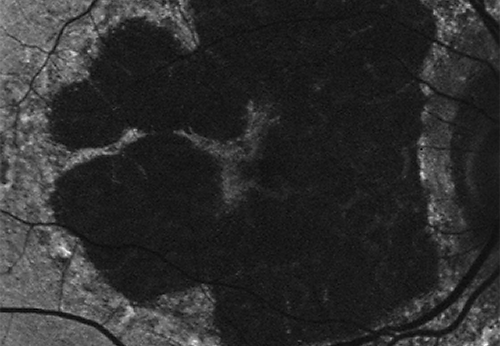By determining the presence of foveal swelling in patients with dry AMD, different layers of the retina can be studied with high precision

23rd January 2013 – The journal Ophthalmology, official journal of the American Academy of Ophthalmology and the most reputed scientific leader in the ophthalmology sector, published, for the second time, an article by Dr. Monés and his scientific team entitled “Optical Coherence Tomography Assessment of Apparent Foveal Swelling in Patients with Foveal Sparing Secondary to Geographic Atrophy”.
The doctors J. Monés, M. Biarnés and F. Trindade explain, based on data from a comparative study of 13 eyes of 10 patients and a control group of 13 patients, that determining the presence of foveal swelling in patients with dry AMD, using spectral-domain OCT, enables the different layers of the retina to be studied with high precision.
Findings with special clinical significance
Geographic atrophy in atrophic AMD does not progress evenly in the macula but usually leaves a preserved island that with time begins to fade. Some authors have described a swelling of this island, in principle, due to swelling of the photoreceptors. In this article, we demonstrate that there is no swelling of the photoreceptors, but what there is, exclusively, is a thickening of the layer of the axons. This is indeed thickening but it is compensated by a thinning of the most outer layers of the retina (globally there is no swelling of the fovea).
These characterisations are very important and we consider them to be findings with special clinical significance as they could have specific therapeutic implications in determining the efficacy of new treatments.
The above article, published only six months ago, entitled “Hyporeflective wedge-shaped band in geographic Atrophy secondary to age-related macular Degeneration: an underreported finding” represented an advance in understanding the mechanisms of ADM as regards cells, which may contribute to the development of new experimental drugs.
The results of this second published study are particularly significant because “to be able to apply new treatments and distinguish the effects of new drugs it is essential that scientific findings are well characterised as regards histology and retina cell layers” says Dr. Jordi Monés, Medical Director of the Barcelona Macula Foundation: Research for Vision.